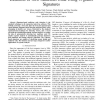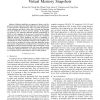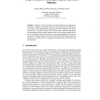33 search results - page 1 / 7 » N-Gram-Based Detection of New Malicious Code |
PST
2004
13 years 6 months ago
2004
Signature-based malicious code detection is the standard technique in all commercial anti-virus software. This method can detect a virus only after the virus has appeared and cause...
COMPSAC
2004
IEEE
13 years 8 months ago
2004
IEEE
The current commercial anti-virus software detects a virus only after the virus has appeared and caused damage. Motivated by the standard signature-based technique for detecting v...
INFOCOM
2010
IEEE
13 years 3 months ago
2010
IEEE
Abstract—Malicious shellcodes are segments of binary code disguised as normal input data. Such shellcodes can be injected into a target process’s virtual memory. They overwrite...
ISI
2007
Springer
13 years 4 months ago
2007
Springer
—Detecting unknown malicious code (malcode) is a challenging task. Current common solutions, such as anti-virus tools, rely heavily on prior explicit knowledge of specific instan...
EUROCAST
2007
Springer
13 years 8 months ago
2007
Springer
Abstract. Computer viruses and worms are major threats for our computer infrastructure, and thus, for economy and society at large. Recent work has demonstrated that a model checki...



